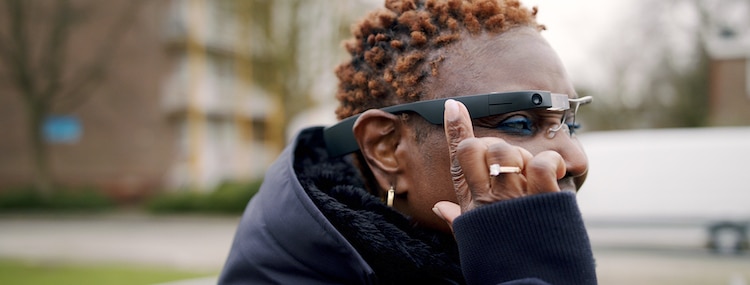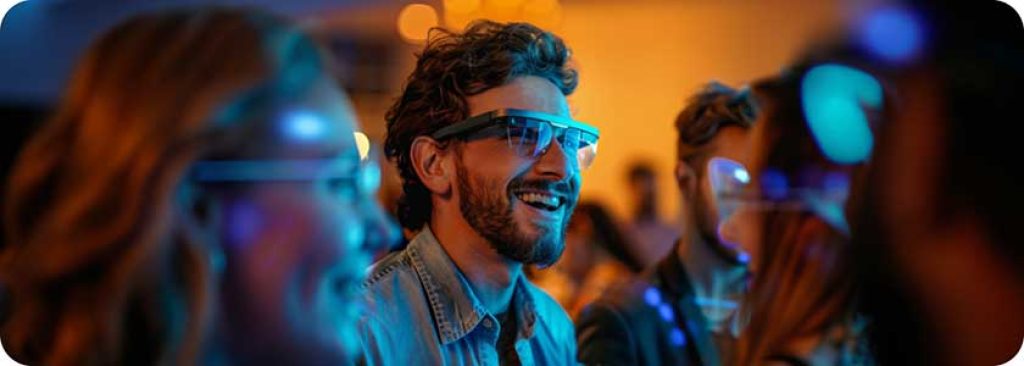Empowering Self-reliance With Assistive Modern Technology for the Blind
The assimilation of assistive modern technology for people who are aesthetically damaged or blind represents a significant improvement in promoting self-reliance and boosting quality of life. With a series of devices-- from display visitors to ingenious responsive devices-- these modern technologies not only help with navigation and communication yet likewise promote social inclusion and participation in numerous facets of life. As we discover the varied sorts of assistive gadgets and their real-world applications, it comes to be clear that the effect is profound. The development of this technology elevates important concerns about availability and future developments that warrant further examination.
Recognizing Assistive Technology
Although assistive innovation has actually advanced significantly for many years, its fundamental objective continues to be the same: to improve the quality of life for individuals with handicaps, especially those who are blind or visually damaged. This innovation includes a broad series of tools and tools that help with self-reliance and functionality in day-to-day activities.
Assistive innovation can be classified into low-tech and high-tech solutions, each created to satisfy certain demands. Sophisticated tools often include software application applications, specialized hardware, and adaptive gadgets that utilize sophisticated innovation to supply support in numerous contexts. On the other hand, low-tech options might involve everyday products that are modified to enhance accessibility, such as magnifiers or tactile pens.
The combination of assistive modern technology into the lives of people that are blind or aesthetically hindered not just advertises autonomy but also promotes social addition and involvement in specialist and instructional environments. By leveraging these technologies, individuals can browse their surroundings, gain access to details, and connect successfully, therefore enhancing their overall lifestyle. Comprehending assistive modern technology is important for advocates, caregivers, and experts that aim to support individuals in maximizing their prospective and attaining higher freedom.
Kinds of Assistive Tools
Assistive gadgets for the blind and aesthetically damaged are important tools that boost daily living by addressing details obstacles encountered by customers. These gadgets can be generally categorized into three primary types: optical gadgets, digital gadgets, and sensory gadgets.

Sensory devices, such as Braille screens and tactile maps, offer alternative methods to receive details. Braille presents convert electronic text right into Braille, enabling individuals to read via touch. Responsive maps supply spatial understanding with increased lines and structures, allowing for far better environmental understanding.
With each other, these assistive tools empower individuals with aesthetic problems to involve more fully with their environments, promoting better self-reliance and self-confidence in day-to-day tasks.

Impact on Daily Life
The integration of assistive innovation right into the every day lives of people who are blind or visually impaired considerably improves their ability to interact and navigate with the world around them. Devices such as screen viewers, Braille displays, and mobile applications promote access to details, allowing users to engage with digital web content, connect successfully, and handle day-to-day tasks individually.
Moreover, technologies like smart glasses and navigation apps offer real-time help in strange atmospheres, enhancing mobility and self-confidence. These tools allow individuals to recognize challenges, read signs, and even identify faces, therefore promoting a sense of freedom in public spaces. Additionally, home automation systems, which can be regulated via voice commands, enable people to handle their living settings better, improving convenience and security.
The effect of assistive technology prolongs beyond practical tasks; it advertises social incorporation and emotional health. By bridging the gap in between people and their environments, these technologies encourage customers to get involved fully in area tasks, go after instructional opportunities, and take part in significant connections. Inevitably, the improvement of assistive modern technology is important in redefining the opportunities for people who are aesthetically impaired or blind, bring about a much more comprehensive and available culture.
Success Stories and Testimonies

An additional powerful review comes from Mark, a current university grad who utilized display analysis software application throughout his academic trip. This modern technology enabled him to access program products and take part in discussions, inevitably leading to his successful shift into the labor force. Mark credit reports assistive modern technology for empowering him to accomplish his occupation objectives, emphasizing its role in leveling the playing field for people with visual impairments.
Additionally, community facilities have reported enhanced involvement in their programs thanks to the intro of available digital systems. These platforms have actually made it less complicated for individuals to connect, share resources, and assistance each other. These success tales jointly underscore the extensive result of assistive innovation in fostering independence, enhancing top quality of life, and breaking down barriers for the blind and aesthetically damaged community.
Future Patterns in Assistive Technology
Emerging innovations are positioned to change the landscape of assistive technology for individuals who are visually impaired or blind. Developments in synthetic knowledge (AI) and equipment knowing are enhancing the abilities of tools, making it possible for even more instinctive user experiences. For example, AI-driven applications are increasingly able to check out and identify things text aloud in real-time, giving customers with useful details concerning their environments.
Additionally, advancements in wearable innovation are creating brand-new possibilities for self-reliance. Smart glasses outfitted with enhanced truth functions can overlay vital information onto the customer's visual field, promoting navigation and interaction with the setting. The assimilation of Net of Things (IoT) gadgets is streamlining access in clever homes, allowing individuals to regulate devices and obtain alerts through voice commands or tactile interfaces.
The growth of braille displays and responsive comments systems is likewise increasing, promoting access to electronic content and enhancing interaction. As these modern technologies proceed to develop, they guarantee to enhance everyday living, academic opportunities, and work leads for people with visual impairments. Continual collaboration in between engineers, users, and advocacy groups will be essential in ensuring these innovations meet the demands of the area effectively.
Verdict
Finally, assistive technology plays a critical role in improving the freedom of people that are blind or visually impaired. By supplying necessary devices and sources, these modern technologies facilitate boosted gain access to, interaction, and navigating to info, consequently promoting freedom and positive self-image. The transformative impact of assistive tools not just advertises effective communication with the setting however also encourages social incorporation and participation in numerous aspects of life, ultimately equipping individuals to grow within their areas.
The integration of assistive technology for people that are aesthetically damaged or blind stands for a considerable advancement in promoting self-reliance and boosting top quality of life.The combination of assistive innovation into the lives of individuals who are blind or aesthetically impaired not just promotes autonomy yet likewise cultivates social addition and participation i was reading this in expert and instructional environments. Eventually, what degree do you need to be an optometrist the improvement of assistive modern technology is critical in redefining the opportunities for people who are aesthetically impaired or blind, leading to a much more comprehensive and easily accessible culture.
Lots of people who are blind or visually impaired have actually shared motivating success stories that highlight the transformative impact of assistive innovation on their lives.In conclusion, assistive innovation plays a pivotal role in enhancing the freedom of individuals that are blind or aesthetically impaired.